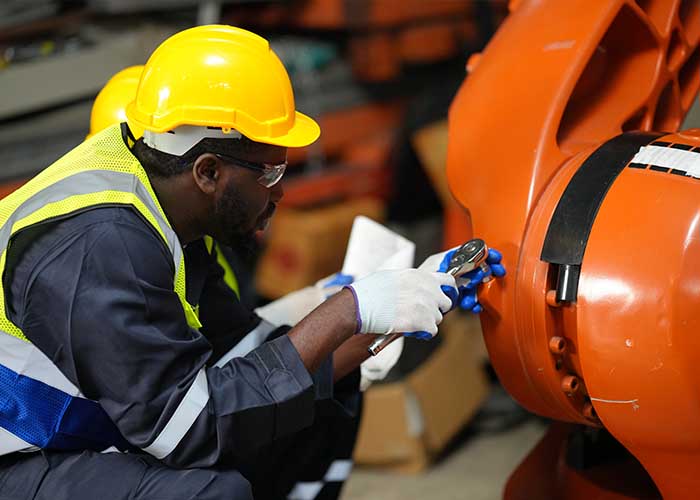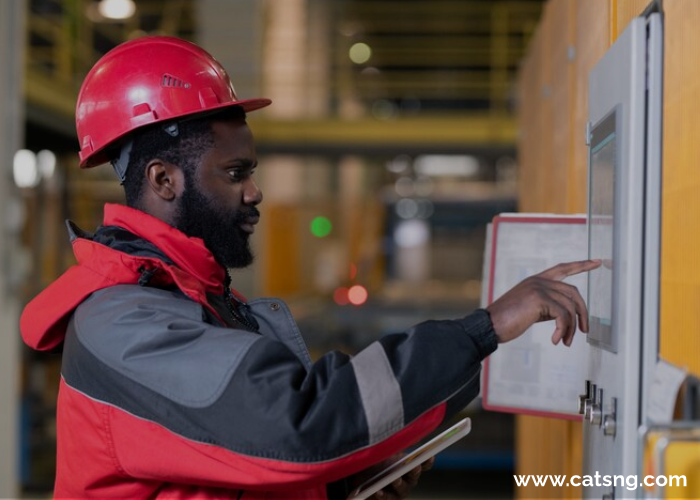If you own or manage a conveyor system, you may be wondering whether or not you need to invest in pulley lagging. When it comes to maintaining your conveyor system, pulley lagging benefits cannot be overemphasized. While it may seem like a minor detail, pulley lagging serves an important purpose in ensuring the safe and efficient operation of your conveyor system. In this article, we will discuss what pulley lagging is, its benefits, and whether or not your conveyor system needs it. In this article, we will explore conveyor pulley lagging benefits and help you determine whether or not your conveyor system needs it.
Table of Contents
- What is Pulley Lagging?
- Pulley Lagging Benefits
- Types of Pulley Lagging
- Factors to Consider
- Does My Conveyor System Need Pulley Lagging
- Why Do Conveyor Systems Need Pulley Lagging
- Conclusion
- FAQs
What exactly is Pulley Lagging?
In a belt conveyor system, the lagging of the pulleys is critical. The layer of material bonded to the shell of a conveyor pulley is known as pulley lagging. Its purpose is to protect the shell, increase friction with the conveyor belt, and discharge water from the pulley. It is used to calculate the traction of a belt conveyor system. Pulley lagging increases productivity while decreasing maintenance costs.
Your pulley and conveyor belt are always in contact with a pulley lagging system. This creates more friction and keeps the belt from slipping. Without it, your belt will deteriorate quickly, especially at high rotation speeds.
Pulley lagging may be required for a variety of reasons, including:
- Service applications (for example, cement plants) with high abrasion requirements for their conveyor belts
- Excessive slippage between belt and pulley, especially in wet conditions
- Increasing productivity by increasing friction between the pulley and the belt
- Improving safety by increasing friction and lowering the risk of sliding.
- Improving belting tracking performance by providing adequate crowning on head pulleys.
- Improving conveyor system reliability by lowering maintenance costs.
Pulley Lagging Benefits
There are several benefits to installing pulley lagging on your conveyor system, including:
Improved Traction
One of the primary pulley lagging benefits is that it improves traction between the belt and the pulley. This can help to prevent slippage, which can cause a range of issues, including increased wear and tear on the belt, reduced efficiency, and even the potential for accidents.
Increased Belt Life
Pulley lagging can also help to extend the life of your conveyor belt. By reducing slippage, pulley lagging helps to reduce the amount of wear and tear that your belt experiences, which can help to prolong its lifespan.
Improved Conveyor System Efficiency
Another benefit of pulley lagging is that it can improve the overall efficiency of your conveyor system. By reducing slippage and improving traction, pulley lagging helps to ensure that your conveyor system is operating as efficiently as possible.
Pulley lagging improves traction between the belt and the pulley, reducing load and wear on the drive, belt, pulleys, bearings, and take-up. Lag in the shop or on the system. Proper pulley lagging is an essential detail for efficient and cost-effective conveyor operation.
Below are some of the reasons your conveyor belt needs pulley lagging:
- It extends the life of critical conveyor components.
- It reduces the wear caused by abrasive materials.
- Pulley lagging Increases the coefficient of friction between the conveyor belt and the pulley to prevent belt slippage.
- It Creates a self-cleaning action on the pulley surface, preventing the accumulation of transported bulk material, water, snow, or ice.
Types of Conveyor Pulley Lagging
There are several pulley lagging types available, each with its own advantages and disadvantages. Some common types include:
- Rubber lagging: This is the most common type of lagging and is made of natural or synthetic rubber. It provides good traction, is resistant to wear and tear, and is relatively easy to install.
- Ceramic lagging: Made of ceramic tiles or cylinders, this type of lagging is highly resistant to wear and can withstand extreme temperatures and abrasive materials.
- Polyurethane lagging: This type of lagging is made of a polyurethane coating and provides excellent resistance to wear and tear, chemicals, and heat.
You can learn more about the types of pulley lagging here
Factors to Consider When Choosing A Conveyor Pulley Lagging
Before deciding on the type of pulley lagging to use, there are several factors to consider, including:
- The type of material being transported: Different materials may require different types of lagging, depending on their abrasiveness, temperature, and other factors.
- The speed of the conveyor: Higher speeds may require more durable lagging materials to prevent wear and tear.
- The environment: Harsh environments, such as those with extreme temperatures or high humidity, may require more resistant lagging materials.
- The budget: Some types of lagging may be more expensive than others, so cost should be taken into account.
The following inquiries should be taken into account when determining whether pulley lagging is necessary for your equipment:
- What is the conveyor’s state right now?
- The kind of load that you’re carrying?
- How frequently does slippage happen?
- Exist any maintenance concerns with this equipment?
- In what kind of setting would this device be used?
- Things to consider before choosing a pulley system
Does Your Conveyor System Need Pulley Lagging?
Conveyor System Configuration
The configuration of your conveyor system is one of the primary factors that will determine whether or not you need pulley lagging. If your conveyor system has a steep incline or decline, or if it is operating in a wet or slippery environment, pulley lagging may be necessary to prevent slippage and ensure safe and efficient operation.
Type of Conveyor Belt
The type of conveyor belt you are using will also play a role in determining whether or not you need pulley lagging. Some types of conveyor belts, such as those made of PVC or urethane, have a higher coefficient of friction and may not require pulley lagging. Other types of belts, such as those made of rubber, may require pulley lagging in order to ensure proper traction and prevent slippage.
Type of Material Being Transported
Finally, the type of material being transported on your conveyor system will also play a role in determining whether or not you need pulley lagging. If you are transporting heavy or bulky materials, or if your materials have a high moisture content, pulley lagging may be necessary to prevent slippage and ensure safe and efficient operation.
Why Do Conveyor Systems Need Pulley Lagging?
While pulley lagging may seem like a minor detail in the grand scheme of things, it plays a critical role in the overall performance and longevity of a conveyor system. Here are some reasons why your conveyor system might need pulley lagging:
1. To Reduce Wear and Tear
Slippage can cause a great deal of wear and tear on the conveyor belt, leading to costly repairs and replacements. One pulley lagging benefits is that it Pulley lagging helps reduce slippage and, as a result, decreases the amount of wear and tear on the belt.
2. To Improve Traction
When a conveyor belt slips on the drive pulley, it can cause a variety of issues, including reduced traction, decreased efficiency, and increased energy consumption. Another Pulley lagging Benefits is that it improves traction, making it easier for the belt to grip the drive pulley and move materials more efficiently.
3. To Prevent Belt Damage
Slippage can cause belt damage, including belt stretching and tearing. Pulley lagging reduces the likelihood of slippage and, as a result, helps prevent belt damage.
4. To Increase Conveyor System Life
By reducing wear and tear, improving traction, and preventing belt damage, pulley lagging can increase the overall lifespan of a conveyor system. This can lead to significant cost savings over time, as fewer repairs and replacements will be needed.
Conclusion
In conclusion, pulley lagging plays a critical role in the overall performance and longevity of a conveyor system. By reducing slippage, improving traction, and preventing belt damage, pulley lagging can help increase efficiency, reduce downtime, and extend the life of a conveyor system. If you’re unsure whether your conveyor system needs pulley lagging, it’s best to consult with a qualified professional who can help you assess your system and determine the best course of action. Ensuring that your conveyor system has the appropriate pulley lagging is crucial for maintaining its efficiency, reliability, and longevity.
CaTS can provide valuable insights and recommendations to help you select the right type of lagging for your specific application, as well as ensure proper installation and maintenance.
Get A Free Consultation With Us Here
FAQs
- What is the purpose of pulley lagging:
Pulley lagging is used to increase friction between the conveyor belt and the drive pulley, reducing slippage and preventing belt damage.
2. What materials are used for pulley lagging?
Pulley lagging can be made of rubber, ceramic, or a combination of both.
3. When should pulley lagging be used?
Pulley lagging should be used whenever there is a risk of slippage between the conveyor belt








